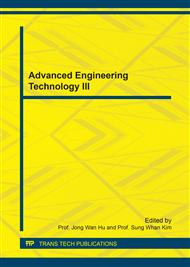p.354
p.360
p.366
p.373
p.383
p.390
p.397
p.403
p.409
An Analysis of the Evaluation Methods for Thermal Transmittance of Curtain Wall System Based on Simulators
Abstract:
With the window rating system being enforced, window companies are required to assign window ratings to their products. As the window ratings is based on the experimental results of fenestration, they are required to spend a lot of time and money conducting laboratory tests in order to assign window ratings to all their products. Through the window performance evaluation system using simulation, the thermal transmittance of products calculated based on numerical simulation can be used in place of experimental results to obtain the window rating. To ensure the credibility of simulation results, it is necessary to use the correct evaluation methods and primary information derived from in use practice should be available for the numerical simulation. The purpose of this paper is to investigate the evaluation methods that the simulator actually uses for the thermal performance of fenestration in WINDOW/THERM. The evaluation methods used by twenty-one simulators were investigated using primary evaluation methods for numerical simulation as the criteria. This study found that most of the simulation results were not trustworthy even though they were similar to experimental results because the evaluation methods used by simulators are incorrect. Furthermore, to enhance the credibility of simulation results, the simulator should be provided with the detailed information used in practice related to the evaluation performance of numerical simulation.
Info:
Periodical:
Pages:
383-389
Citation:
Online since:
June 2017
Authors:
Keywords:
Price:
Сopyright:
© 2017 Trans Tech Publications Ltd. All Rights Reserved
Share:
Citation:


